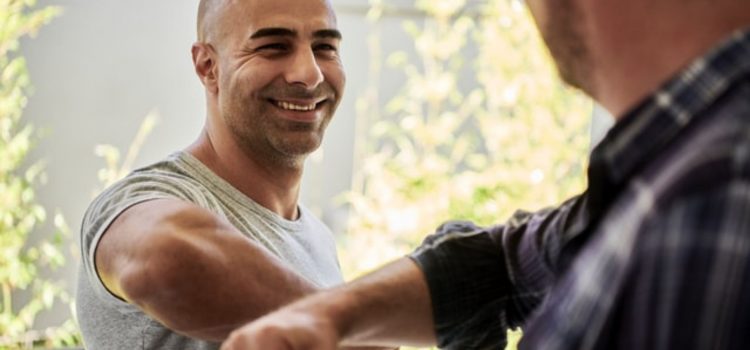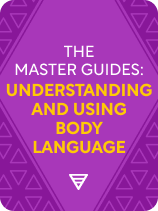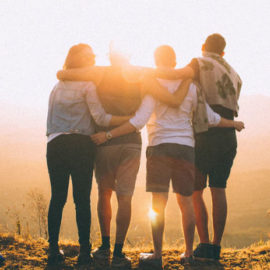

This article is an excerpt from the Shortform book guide to "The Master Guides: Understanding and Using Body Language" by Shortform. Shortform has the world's best summaries and analyses of books you should be reading.
Like this article? Sign up for a free trial here.
What is the role of body language in communication? And how important is body language?
Body language plays two roles in communication: influencing how others perceive us and changing how we feel, which in turn affects our relationships. By understanding the influence that body language has, we can communicate better and build better relationships.
Read on to learn more about the two roles that body language plays in communication.
How Body Language Shapes Communication and Connection
The role of body language in communication is quite significant. Consciously and unconsciously, it influences how we make judgments about others, form bonds, and establish trust in relationships. Therefore, knowledge of body language—whether your own or someone else’s—is an important aspect of communicating effectively and forming strong connections.
Here we will discuss the two primary roles of body language in communication: influencing how others see us and influencing our emotional state.
Role #1: Nonverbal Cues Change How Others Perceive Our Words
In The Definitive Book of Body Language, Allan and Barbara Pease also discuss how your body language influences how others interpret your words. They explain that during verbal interactions, people intuitively respond to each other based more on what they see than on what they hear. They suggest that your body language accounts for 60-80% of how others perceive you.
The perception the other person forms of you based on your body language determines their reaction to what you say. The Peases argue that people are more likely to respond positively to what you say when they trust you, and the degree to which people trust you hinges on how well your words and your body language align.
When the two align, people trust you because they feel as though you’re expressing yourself honestly. For example, your friend trusts you when you tell her you’re excited to see her because you look her in the eye and smile when you say it. As a result, she responds positively to your words by showing signs of affection—for instance, by relaxing her posture, smiling, and making eye contact.
When your body language doesn’t align with your words, people don’t trust you because they feel as though you’re lying or hiding something. For example, your friend doesn’t trust you when you tell her you want to see her because you avoid eye contact and clench your jaw (which are nonverbal cues that can suggest discomfort or deceit). As a result, she responds negatively to your words by showing signs of withdrawal—for instance, by crossing her arms, turning away from you, and avoiding eye contact.
Robert Greene offers further advice for judging a person’s true feelings when their words and body language don’t match. In The Laws of Human Nature, he argues that nonverbal communication more often reveals hidden negative emotions than hidden positive emotions. When you see conflicting signals—a flash of a sad facial expression when a person’s words are positive—assume the negative emotion is what the person is actually feeling. For example, if someone acts happy to see you but you detect tension in their voice, they’re probably more uncomfortable than happy.
Additionally, knowing how to read body language can help you get what you want out of any conversation. In The Definitive Book of Body Language, Allan and Barbara Pease suggest that this is because awareness of others’ body language helps you read their emotions. This in turn helps you control how they perceive you. Sometimes, the emotions you read from your conversational partner may suggest that they’re not responding to you in the way you hoped or in a way that reflects positively on you. In this situation, you can change your approach until the other person responds more favorably.
For instance, say you want your new friend to think that you’re interesting. However, you notice that she starts people-watching and tapping her foot every time you talk about your job. Because you know that these two cues indicate boredom, you switch topics until you find something that causes her fully to focus her attention back on you—she’s now interested in what you have to say.
Role #2: Body Language Is Intertwined With Our Emotions
As we alluded to above, body language is deeply connected to emotions. Understanding the relationship between body language and emotions can help you change your emotional state and communicate appealing signals to potential friends.
In Presence, Amy Cuddy argues that there’s a two-way link between your body language and your emotions. Your body language often reflects your emotional state (as in slumped shoulders when you’re feeling upset), but you can also alter your mindset by changing your body language. For example, when you change your posture to exude confidence—by relaxing and opening up your shoulders—your emotions take cues from your body, and you start to genuinely feel more self-assured. According to Schafer and Karlins in The Like Switch, confidence and ease are some of the qualities that most attract potential friends, as confident people are more comfortable sharing details about themselves. This builds rapport in new relationships. Additionally, confident body language displays friendliness and openness to connection, so it makes you more approachable to potential friends. Therefore, it’s possible that if you consciously adopt body language that makes you look and feel more confident, you’ll have an easier time making friends.

———End of Preview———
Like what you just read? Read the rest of the world's best book summary and analysis of Shortform's "The Master Guides: Understanding and Using Body Language" at Shortform.
Here's what you'll find in our full The Master Guides: Understanding and Using Body Language summary:
- How to better understand nonverbal communication
- How to use and interpret body language to form connections
- The body language you should avoid if you're looking to make friends






